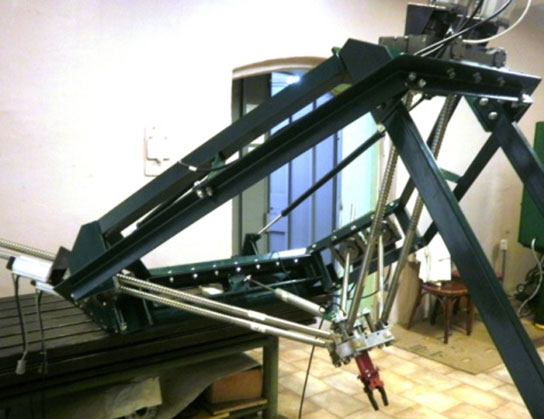Theory of kinematics and dynamic workflows for processing dangerous objects machine tools mobile robots
The creation of equipment for working with dangerous objects in the field is important for improving the defense capability and national security of the state. The development of such devices is focused on obtaining application results of dual use.
The main part of the problem of high-precision processing of dangerous objects, in particular, mines, shells, tanks with toxic materials, pipelines under pressure, in field conditions, has been solved.
The concept of high-precision processing of dangerous objects by mobile robotic machines has been developed, which consists in using mechanisms with parallel kinematic connections.
The basic principles of the kinematics theory of mobile robot machines are formulated. They determine the vector characteristics of the kinematic parameters of the spatial movement of the executive body of the machine-robot using the natural tried of the trajectory of the executive body. The theoretical positions are applied to the analysis and synthesis of tool paths.
The features of the dynamic working processes of spatial cutting on mobile robotic machines have been established. They are based on the use of orthogonal piecewise constant functions and discrete analogs of the one-dimensional and two-dimensional Duhamel integral (convolution). To remotely control the processing of dangerous objects, the coefficients of the first and second quadratic forms on characteristic areas of high-precision machined surfaces were used. Mathematical modeling of the dynamics of machine-robots was carried out by describing the processes by piecewise constant orthogonal Walsh functions, which determine the signs of the harmonic components of dynamic processes.

| Attachment | Size |
|---|---|
| 158.74 KB |




